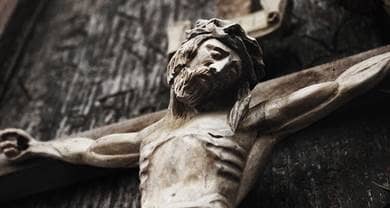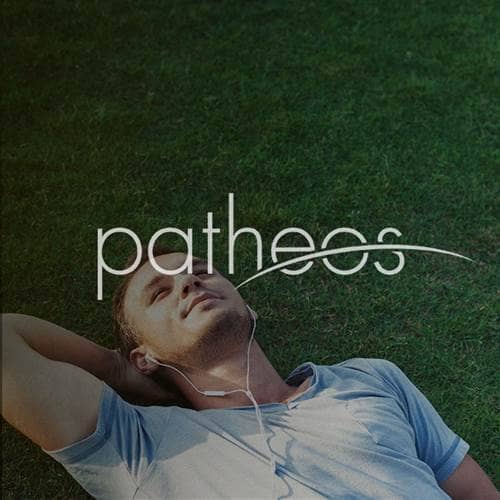- Trending:
- Pope Leo Xiv
- |
- Israel
- |
- Trump
- |
- Social Justice
- |
- Peace
- |
- Love

RELIGION LIBRARY
Roman Catholicism
Exploration and Conquest
Catholicism's expansion included the reconquest of Muslim Spain (732-1492) and the crusading movement to take the Holy Land. Crusading began in Muslim Spain, and the idea of holy or just war was transferred to the Middle East when Pope Urban II in 1095 called on Catholics to take up the cross. If Catholic success is measured by conquering Jerusalem, then only the First Crusade of 1099 succeeded. A Second Crusade (1147-1149) reacted to Muslim victories and then Muslims under Saladin retook Jerusalem in 1187. A Third Crusade (1189-1192) and Fifth Crusade (1213-1221) secured safe passage for Christian pilgrims, but the Fourth Crusade resulted in the disastrous sack of Constantinople (and eastern, Greek Christians) by western Europeans in 1204.
The Crusades also resulted in a resumption of Catholic violence against Jews, which had roots in the first millennium. In 1009, the Muslim caliph Hakim ordered the Church of the Holy Sepulchre in Jerusalem to be burned; within a decade, French Catholics blamed Jews in their own towns of bribing Hakim, leading to a pogrom against them. Catholic crusaders traveling to Jerusalem in 1096 and 1147-1149 killed Jews in Germany, considering them infidels along with Muslims. The crusading effort also contributed to forced conversions among Jews in Spain in the 13th century and expulsions from England in 1290, France in 1306, and Spain in 1492.
Catholics and Protestants joined the race for "God, glory, and gold" in the rapid opening up of the world after Columbus sailed in 1492. Spanish and French Catholic missionaries, especially Franciscans and Jesuits, were influential in setting up missions that became cities in the American southwest and midwest: San Antonio, Santa Fe, St. Louis, Los Angeles, San Diego, San Jose, San Francisco, and many others. A number of missionaries also became martyrs, such as the Jesuit North American martyrs in modern-day New York, Montreal, and Quebec.
Very soon, questions were raised as to whether indigenous peoples were humans or savages and whether they could be baptized or ordained--or enslaved. Rome's answers to these and related questions of just how to acculturate the faith were frequently inconsistent. Pope Paul III, in 1537, said that Mexico's "Indians" were human who could be taught, baptized, and who must be left free regardless of their faith. He reversed the decisions of two popes of the prior century who had allowed non-Christians to be taken as slaves, supporting another pair of 15th-century popes who had opposed slavery.
Violence toward indigenous peoples was also not uncommon. Ferdinand Magellan arrived in the Philippines in 1521, set up a cross on Easter Sunday, and forced local leaders to venerate it. When a village resisted, Magellan burned it down. In 1640, the archbishop of Lima in Peru ordered "idolatry inspections." An overlooked hero of this part of the story of Catholic missions is Bartolomé de Las Casas (1474-1566), whose father sailed with Columbus on his second voyage and returned with a slave for his son. Las Casas went to Cuba in 1502, where he owned property and slaves. Appalled by their fate, he was ordained a priest, joined the Dominicans, and championed the indigenous' people's plight. Shuttling between Europe and the Caribbean, he argued that they were humans and equals, earning the title "Protector of the Indians."
In 1622, Pope Gregory XV synthesized missionary efforts by creating the Sacred Congregation for the Propagation of the Faith (Propaganda Fidei), updating a 1568 congregation of cardinals who oversaw the "conversion of infidels." A major goal of the new congregation was to promote an indigenous clergy and acculturated church as rapidly as possible to take over from European missionaries. But the goal of adaptation could also lead to confusion. Jesuits in Brazil and Canada successfully learned local languages so they could speak, preach, teach, and celebrate the sacraments in them.
Jesuits in Japan and China were equally sensitive to the problems associated with imposing a Latin-oriented, European style of theology and worship. The Jesuit Matteo Ricci (1552-1610) gained entry to China when he dressed as a Buddhist monk. He studied Confucius, learned Chinese, and engaged scholars to gain authority before he began preaching. But this effort, in the eyes of some, went too far and led to the Chinese Rites controversy. It appears Jesuits permitted a measure of indigenous religion to cross over into Catholicism: ancestor worship, reverence for Confucius, and Chinese ideas about heaven, monotheism, and God's all-knowing quality that were deemed close enough to, if not quite, Catholic dogmas. Rome's response was once again inconsistent. Paul V (1605-1621) permitted Mass in Chinese. In 1645, Rome condemned ancestor worship, but a decade later Pope Alexander VII approved of the Jesuit approach only to have it condemned again in the next century. Finally, in 1745, Pope Benedict XIV abolished Chinese Rites.
Study Questions:
1. When were the crusades? What were their results?
2. Were Catholic missions in the 15th century based solely on religious conversion? Explain.
3. In what ways were missionary efforts of the 16th and 17th centuries violent?
4. Who was Matteo Ricci? Why is his work often considered controversial?










